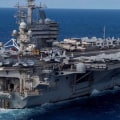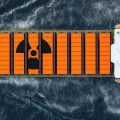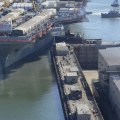Nuclear-powered submarines are a powerful tool for navies around the world, offering unparalleled endurance, stealth, and speed. These vessels can carry nuclear fuel for up to 30 years of operation, and don't require refueling. This means they can operate underwater for three or four months in a row and cross oceans with ease. Currently, only six countries have nuclear-powered submarines: the United Kingdom, the United States, France, Russia, China, and India.
The high efficiency of nuclear energy also allows these submarines to operate at high speed for longer periods than conventional diesel-electric submarines. This makes them difficult to detect and track, as they can remain submerged for extended periods of time. In the 1990s, submarines powered by independent air propulsion (AIP) technology came into operational use. While these vessels are cheaper than nuclear-powered submarines, they are not as powerful or as stealthy.
However, there is reason to believe that AIP submarines can, if properly designed, swim underwater even quieter than their nuclear counterparts. This could potentially make them more difficult to detect and track. Ultimately, humans need to socialize and be in touch with the outside world, so submarines must resurface to allow the crew to communicate. When a nuclear-powered submarine is decommissioned, its nuclear reactor compartments are carefully sealed and taken to an approved disposal site.
The Oregon Department of Energy provides information on transporting decommissioned naval nuclear reactors on its website.



